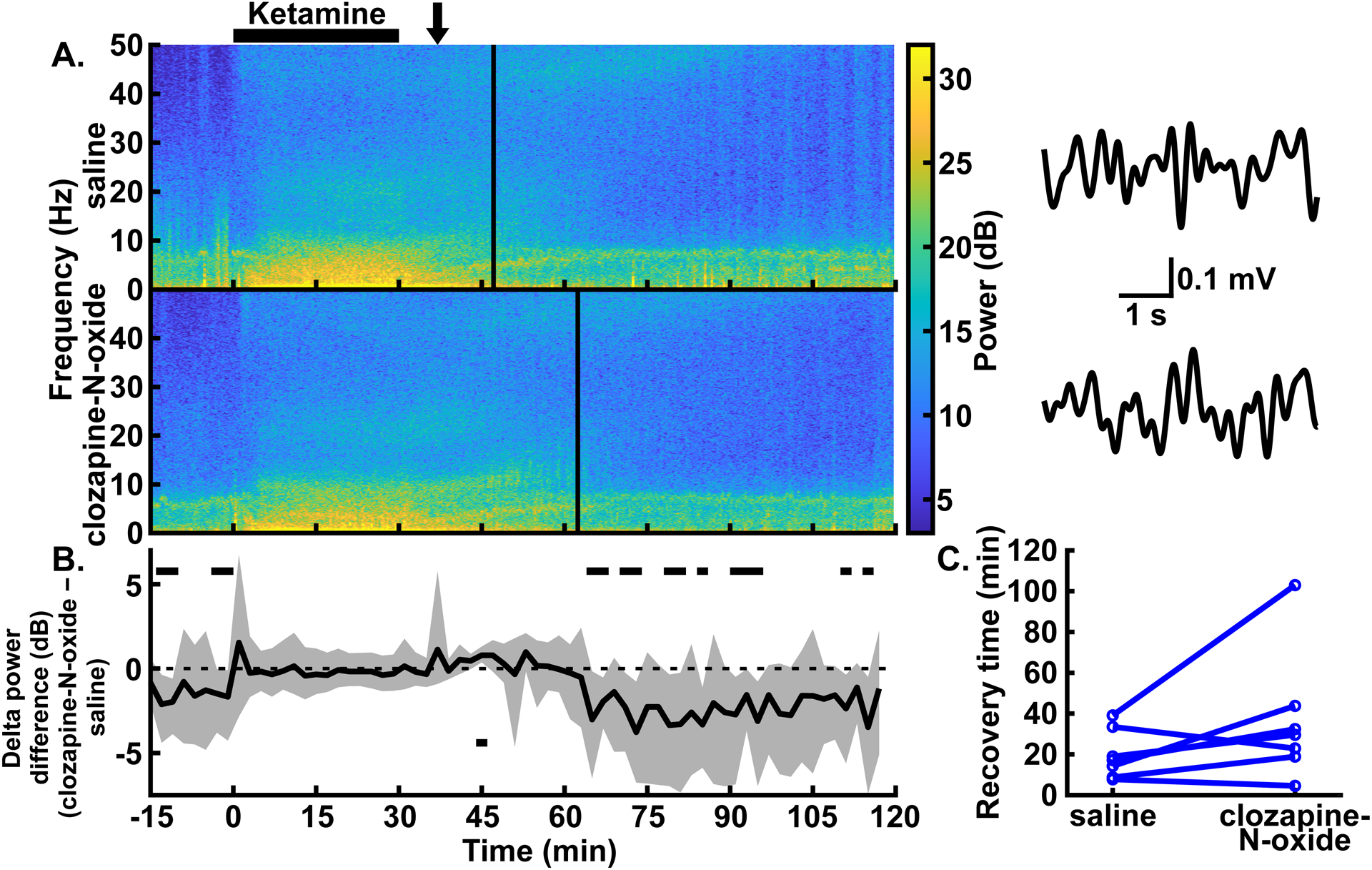Fig. 5.

Excitation of CaMKIIa+ neurons in the parabrachial nucleus region did not affect delta oscillations during, nor recovery time following, low-dose ketamine anesthesia. (A) Example spectrograms showing the spectral power for 0–50 Hz over time in the prefrontal EEG following intraperitoneal injections of saline (top) and clozapine-N-oxide (bottom) in the same rat. Black bar over the spectrograms indicates the time over which the low-dose ketamine infusion (2 mg∙kg−1∙min−1 for 30 mins) took place. Clozapine-N-oxide or saline injections were given an hour before the start of the ketamine infusion. Solid vertical lines represent the time of recovery for each example experiment. Example EEG traces to the right of each spectrogram are bandpass filtered from 0.5–4 Hz and show similar delta amplitude with and without parabrachial nucleus region excitation. The arrow over the spectrograms indicates the time, for both conditions, from which the traces were taken. (B) Summary of power differences over time shows similar delta power for clozapine-N-oxide and saline experiments during ketamine infusions. Time periods that show statistically significant differences with 99% confidence are indicated by black bars above or below the dashed zero line, representing lower power in the clozapine-N-oxide or saline conditions, respectively. Spectrograms in (A) and summary power in (B) have the same time axes. (C) No statistically significant differences between conditions were seen in recovery times, as measured by time to return of righting reflex.
